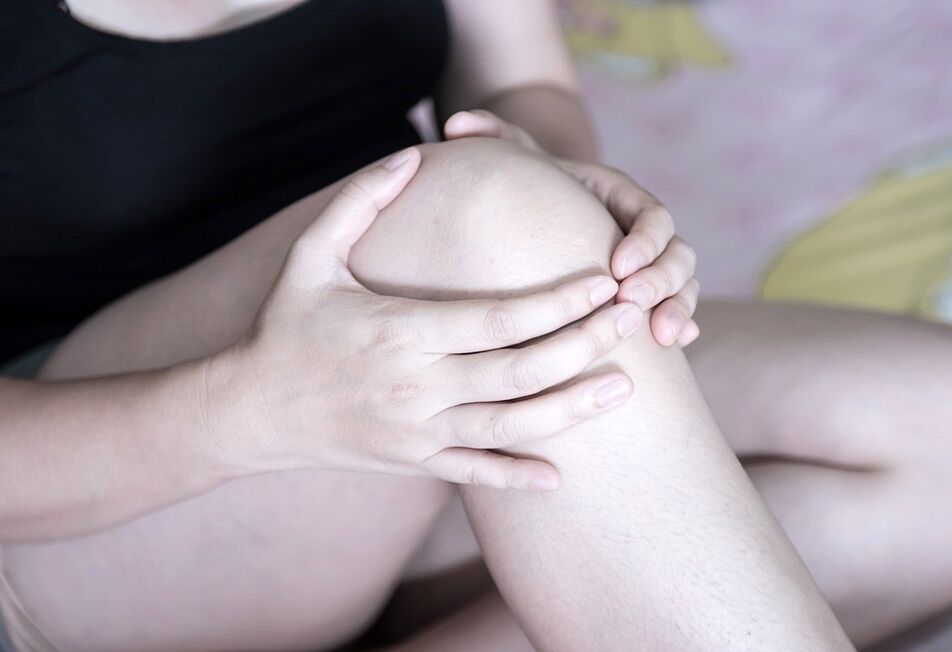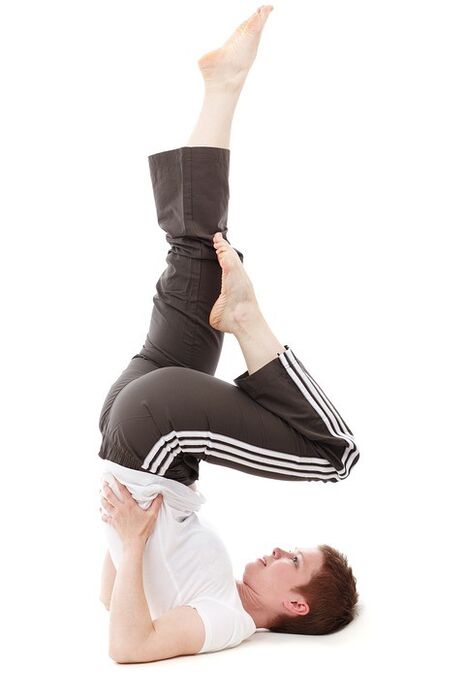Osteoarthritis is a group of diseases caused by various reasons, but the clinical manifestations and course of the disease are similar. The core of all joints is the destruction of each part of the joint. Osteoarthritis is a progressive disease in which the joint function of the affected area is impaired. Knee joint arthritis (arthritis) refers to a disease in which the cartilage, synovium, ligaments, and muscles around the knee joint are damaged. Knee joint arthritis requires comprehensive treatment and also requires your attention. And at least have a basic understanding of the causes and ways of this disease.
Gonorrhea: Causes
The causes of knee arthritis may be:
- Joint damage: According to scientific literature, approximately one-third (possibly half) of arthritis cases have previous trauma. A person may accidentally fall on the street while exercising, or damage joints. First, there will be acute pain, then dull and a little sore, but it will not cause much discomfort. Normally, in most cases, the joints will heal themselves quickly and show no signs of injury. But in rare cases, this unfavorable coincidence can cause the development of arthritis.
- Long-term joint overload: It is believed that those who are professional and long-term excessive pressure on joints (professional athletes, postmen) may face the development of early joint arthritis.
- Joint inflammation (knee arthritis): As the joints become inflamed, biological and morphological changes occur, and blood flow is disturbed. Therefore, arthritis leads to knee arthritis (secondary arthritis).

Other risk factors
- Genetic. Generally, arthritis of the joints is not directly inherited, but the "catalyst" in the development of arthritis may be the specificity of metabolism, the structure of cartilage tissue, and these are only genetic transmissions. Similarly, if a person suffers from joint abnormalities or underdevelopment, birth trauma, arthropathy may occur.
- overweight. Overweight is an "aggravated" condition in the development of arthritis: that is, weight is not directly related, but weight gain will bring a great burden. It must be remembered that among obese people, knee joint disease is more serious than others.
- Chronic stress. It is a well-known fact that the adrenal glands release "stress hormones" when they experience too much, because they cause a decrease in blood supply and a decrease in the production of hyaluronic acid, which is an important component of the human body. The normal function of the joints. Due to long-term stress and the aforementioned exacerbations, arthropathy may occur.
Symptoms of gonorrhea
- pain. One of the first and main symptoms of knee arthritis is knee pain. It is worth noting that knee pain only occurs during physical exercise: when walking, running, squatting and lying down, this pain will disappear, and will disappear completely after a period of time (until the next weight bearing).
- There are cracks in the joints. Contrary to the "tightening" of joints in healthy people, the tightening of joints affected by arthropathy has a different tone: rough and "dry".
- Stiff joints. Compared with stiffness, stiffness usually cannot represent a knee joint with a stiffness of level 1. But as progress progresses, the range of motion of the affected joints will be greatly reduced.
- Deformation of the knee joint. With the development of gonorrhea, a pathological form-bone spurs-is gradually formed in the joints. Because of them, the appearance of joints may be different from a healthy appearance. In addition, the appearance of the joints may be somewhat "loud", which is caused by excessive fluid accumulation in the joints (synovitis).

The course of knee arthritis
Knee osteoarthritis most often affects women rather than men. The disease usually develops after the age of forty, but sometimes occurs earlier, usually after injuries and in professional athletes. As we wrote earlier, obese women and people with severe varicose veins will have more complicated and severe gonorrhea.
The onset of the disease is characterized by the appearance of mild knee pain. Usually, pain occurs when a person has to stand for a long time when going up and down the stairs. When a person lies down, the pain disappears, but when you need to stand up, the first step is very painful for him.
The knee joint has three degrees of articulation
Knee arthritis 1 degree
First-degree knee arthritis is characterized by sometimes severe pain in the knee, but at the same time, the bones that form the knee joint are still not deformed, but the knee may look slightly swollen due to synovitis. If there is too much fluid in the joint cavity, it will spread to the fossa. This condition is called Baker's cyst. If you have been diagnosed with this diagnosis, there is no need to worry, this is not a neoplastic tumor and can be reduced under the influence of the medicine prescribed by the doctor.
Second degree knee arthritis
Two to three months after the onset of the disease, second-degree knee arthritis began to occur. During this period, knee joint pain usually gets worse. This kind of pain no longer occurs only during physical exercise, but is accompanied by anyone's exercise. Usually, the obvious necking of the knee at this time will "engage" the pain of the joint. Grade 2 gonorrhea of the knee joint, in addition to severe pain and crunch, also reduces the ability of the knee to bend the calf. The deformation of the joints is immediately apparent: the bone structure changes shape, and when palpated, the joints become hard and "rough".
Knee Arthritis Grade 3
Third-degree knee arthritis is characterized by constant and severe pain, and it is even difficult for a person to prone position: he is forced to find a position to rest. The knee became sensitive to changes in the weather, and the pain started in the middle of the night. The level 3 knee metamorphosis of the knee joint is accompanied by a final decline in mobility, and people cannot bend the legs of the knee joint more than 90°. Sometimes, in grade 3 gonorrhea arthritis, it is impossible to straighten the legs completely, and one has to walk on slightly curved legs. In some cases, the deformity of the leg develops into an O shape or an X shape. In extreme cases, it is necessary to treat highly operable arthropathy.
Knee tilt syndrome: treatment. Important things to know when treating your knee with medication
Although there are a lot of advertisements promoting a miraculous arthralgia ointment, you need to understand that it is impossible to cure gonorrhea by any one method. A comprehensive approach is needed.
If you find that you have the first signs of arthritis, you need to see a doctor as soon as possible. This may be an arthrologist, a rheumatologist, an orthopedist, or first a general practitioner.
Knee arthritis: NSAID treatment
So how to treat knee arthritis? Generally, for the treatment of joints, non-steroidal (non-hormonal) substances that can reduce the inflammation process of the joints are used. Antipyretic and analgesic drugs can be used to treat knee gonorrhea. Remember that the drugs in this group should not be taken all the time. They can "mask" the symptoms of the disease. Please note: Do not take the medicine by yourself, and only take action under the guidance of a competent expert. The expert should prescribe you according to the various parameters of your body and taking into account the contraindications of the use of the medicine.
In recent years, a new generation of drugs has been used in practice: they are selective drugs that have the same effects as NSAIDs, but rarely produce unpleasant side effects and do not cause complications.
Knee joint disease: treatment with chondroprotective agents
In the case of knee arthritis, you can take substances that nourish the articular cartilage tissue and restore its structure. These drugs are chondroprotective agents. This type of medicine is most effective if you have grade 1 gonorrhea of the knee, because extreme lymphadenopathy is almost impossible to recover: almost all cartilage is destroyed. In order to obtain the effects of chondroprotective agents, they must be used for a long time: at least 2-3 courses of treatment are required, usually a year and a half. Keep in mind that although there are few contraindications to these drugs, the method of use should be approved by your doctor.
Knee joint disease: treatment of vasodilators
Vasodilators are a good comprehensive treatment for arthropathy. They help restore joints by improving blood flow and relieving spasms of small blood vessels. One of the pleasant benefits of knee arthritis treatment including vasodilators is that it can eliminate nighttime pain in damaged joints. To obtain the maximum therapeutic effect, it is best to use vasodilators together with chondroprotective agents. In this way, the nutrients of the chondroprotective agents will penetrate into the joints and circulate more actively in the joints. Remember, the use of any medication must be coordinated with your doctor.
Knee joint disease: ointments and ointments
Marketers often use therapeutic ointments for joint disease as a trap for desperate patients. Keep in mind that treatment with extreme knee arthritis ointment will not be effective, but in the initial stage, creams and ointments can significantly alleviate this situation. Analgesic ointments can be used to improve the circulation of the joints. These drugs help to eliminate painful joint spasms and increase blood circulation. In addition, you can use ointments based on bee and snake venom. These ointments are irritating and can increase blood circulation in damaged joints. Keep in mind that many poison-based ointments can cause allergic reactions, so only experts should allow them to be used.
Therapeutic exercises for knee arthritis
Therapeutic physical training of knee arthritis is an effective treatment method that combines medicine and physical therapy.
You must remember that remedial gymnastics for the treatment of limb and joint diseases is the main treatment method, because we cannot strengthen the muscles and blood vessels of the knee joint, and we cannot activate the blood supply with any drugs. In addition, remedial gymnastics is the most budgetary and effective treatment method, without unnecessary expenditure of materials.

However, exercise therapy is necessary for arthritis. Don't rush to do 200 squats or 100 kicks every day. Under no circumstances should severe dynamic loads be imposed, but static exercises should be performed instead of active flexion and extension exercises. Unfortunately, most patients do not like to do static exercises because they consume the most energy and fatigue, but if you insist on 2-3 weeks and exercise regularly, not only will the condition of the knee joint be improved, but you can also find an increase in intensity. And performance improvement.
How to do it right
The exercise must be very smooth and gentle, stretching the ligaments and joints under light pressure. During exercise, don't let severe pain. Focus on gradual progress, regularity, and don't rush for success: only continuous and moderate efforts can achieve the desired results.
Please remember that after abdominal and thoracic organ surgery, fever is a critical period for women, do not use strength exercises for the first time. It is absolutely necessary not only to pay attention to the joints, but also to put pressure on the abdominal compressions and back muscles. This is necessary so that the main blood flowing through the limbs is through the muscles of the abdomen and back.
The fitness center can be obtained for free from the Internet. Please follow our instructions for 30 to 40 minutes of various exercises every day.
We hope you have perseverance and can regain your previous mobility!
Physiotherapy for knee arthritis
If you ask if physical therapy can be used to treat knee arthritis, we will answer-yes!
Knee Arthritis: Treatment-Laser Therapy
Laser therapy is the use of a beam of light for therapeutic purposes. The beam consists of ultraviolet, infrared, and red radiation spectrum. The effect of laser has anti-inflammatory, anti-congestion and analgesic effects. Usually, the course of laser therapy consists of 15 lessons. Laser therapy is a relatively safe treatment method, but it is impossible to cure arthritis with a single laser. This is another treatment method.
Knee Arthritis: Treatment-Cryotherapy
Cryotherapy is the effect of local cooling of joints. There are two methods of cryotherapy: using cryotherapy and applying liquid nitrogen directly to the joints. The latter method is considered to be the most effective for knee joint arthritis. With cryotherapy, blood supply to joints can be improved, metabolic processes can be improved, and muscle spasms can be relieved. The course of treatment is usually 10-12 times a day.
Knee Arthritis: Treatment-Magnetic Therapy
Magnetic therapy-exposure to a magnetic field. A fairly common method of physiotherapy in hospitals and clinics. Exposure to a magnetic field has an anti-edema effect, which can cause non-contact electrical muscle stimulation and reduce joint inflammation. The course of treatment is prescribed by a physician-physical therapist.
Knee Arthritis: Treatment-Ultrasound Therapy
Ultrasound therapy-sonic therapy. Ultrasound for joints helps to improve blood supply, reduces muscle spasms, and has analgesic effects. In order to enhance the therapeutic effect of ultrasound, a drug is applied to the affected area. With the help of ultrasound, drugs can penetrate tissues more easily.
Knee joint disease: heat treatment
Heat treatment is used in the 1-2 stages of the disease to treat knee arthritis. The method includes treatment with stinky stone, paraffin wax, and mud. The latter deserves special attention: the mud treatment of arthritis can be done at home. It is necessary to dilute the healing mud with water and heat it to 60°, then mix the resulting mass with the unheated mud, cool it to 38-42°, and apply 2-3 cm on the affected jointThick layer. Cover the mixture with a tarp and a warm blanket. Let stand for 30 minutes. A process of 10-12 processes is performed every other day.
Diet and herbs for knee arthritis
Dieting is an important factor in successful treatment. However, we must understand that the development of arthritis has nothing to do with any special nutrition, but overweight leads to the occurrence of arthritis of the lower limbs. However, you need to lose weight properly: under no circumstances should you go hungry or sit on a strict diet, because as you know, after a hard diet, weight will increase, and often it will increase.

We need to know that being overweight is also a disease, but it can and should be treated. Obesity affects the regulation of appetite and satiety, but it is possible to "guide them on the right path. "
First, you need to realize that a problem is usually related to poor eating habits. Second, you need to learn to set realistic goals for yourself. A weight loss of 10-15% compared to baseline is a good result. Believe me, even if you lose 5% of your original weight, you will immediately feel relaxed: your blood pressure will drop and the condition of your joints will improve.
Weight loss goal
In any case, if you have set a weight loss goal, then you will have to reconsider your diet, diet composition and the amount of food you eat. Reduce candy, baked goods and various "fast food" carbohydrates.
For beginners, we recommend trying a simple diet method. Prepare your usual diet by putting regular food on the plate. Now, only eat half of the food on the plate. You will quickly notice that you just ate the whole food out of habit, even though you hardly need anything to satisfy your hunger pangs. Even if you are hungry, eat half of the food slowly and rest for 10 minutes. You will be surprised that after this period of time, you don't want to eat the rest: the hunger is gone, and with it a craving craving to eat everything. After two months of such "understanding", you will see obvious results. try it!
In addition to the correct intake of food, do not forget to consume enough fluids. Those who do not have severe cardiovascular disease and kidney disease, as well as those who do not have edema, can safely increase the amount of fluid they drink to 2 liters a day.
Alternative treatment for knee arthritis
Herbs for arthritis. It is important to note that infusions and decoctions for joint disease are weaker than the methods described above, but they may have relative benefits.

During this month, you can take one of the following infusions:
Remember, you only need to take each infusion or decoction separately and then switch to another. Don't drink it all at once!
Birch wood soup for joint disease
Birch soup for arthritis: You must pour 1 tablespoon of birch sprouts into a cup of boiling water, boil the mixture on low heat for 15 minutes, then boil it for 1 hour, and cover it warmly on the container. After an hour, you need to filter and add the broth to its original volume with boiling water. Take a quarter (1/4) cup of infusion every day one hour after meals for one month.
Linden to treat arthritis
Linden infusion for joint disease: 3 tablespoons of linden flowers and a cup of boiling water should be poured into it, boiled on low heat for 15 minutes, then cooled and filtered. 3 weeks after a meal, 3 times a day, 1 cup each time, warm.
Niu d soup for arthropathy
Niu d soup for joint disease: 1 tablespoon of ox d root should be poured into 1 cup of boiling water, simmer for about 30 minutes, stirring often, and then the broth is cooled at room temperature and filtered. Put the broth into a half (1/2) cup and heat it 3 times a day, and then consume it for another month.
Der wood injection for treatment of arthropathy
Der wood injection to treat arthritis: You must pour 2 tablespoons of gray alnus incana (Alnus incana) into 1 cup of boiling water, keep it on low heat for 15 minutes, then cool and filter. Before eating for a month, infuse three (1/3) cups of alpine three times (1/3) a day for half an hour.
Collection of herbs for joint disease
Collect herbs for joint disease: Mix equal parts of willow bark, parsley root, black elderflower and nettle leaves, and chop them thoroughly. Pour 4 tablespoons of the mixture with 1 liter of boiling water and boil for 5-10 minutes on a low fire, then let it sit for 2 hours and drain the water. Half an hour before meals, take this series in half a cup four times a day. The course of treatment is 1 month.
in conclusion
Although arthritis is a very unpleasant disease, when facing it, it is necessary to draw correct conclusions from the disease, reduce bad emotions, start fighting for your physical and mental health, and follow our recommendations. Then, you will surely conquer the disease!






























